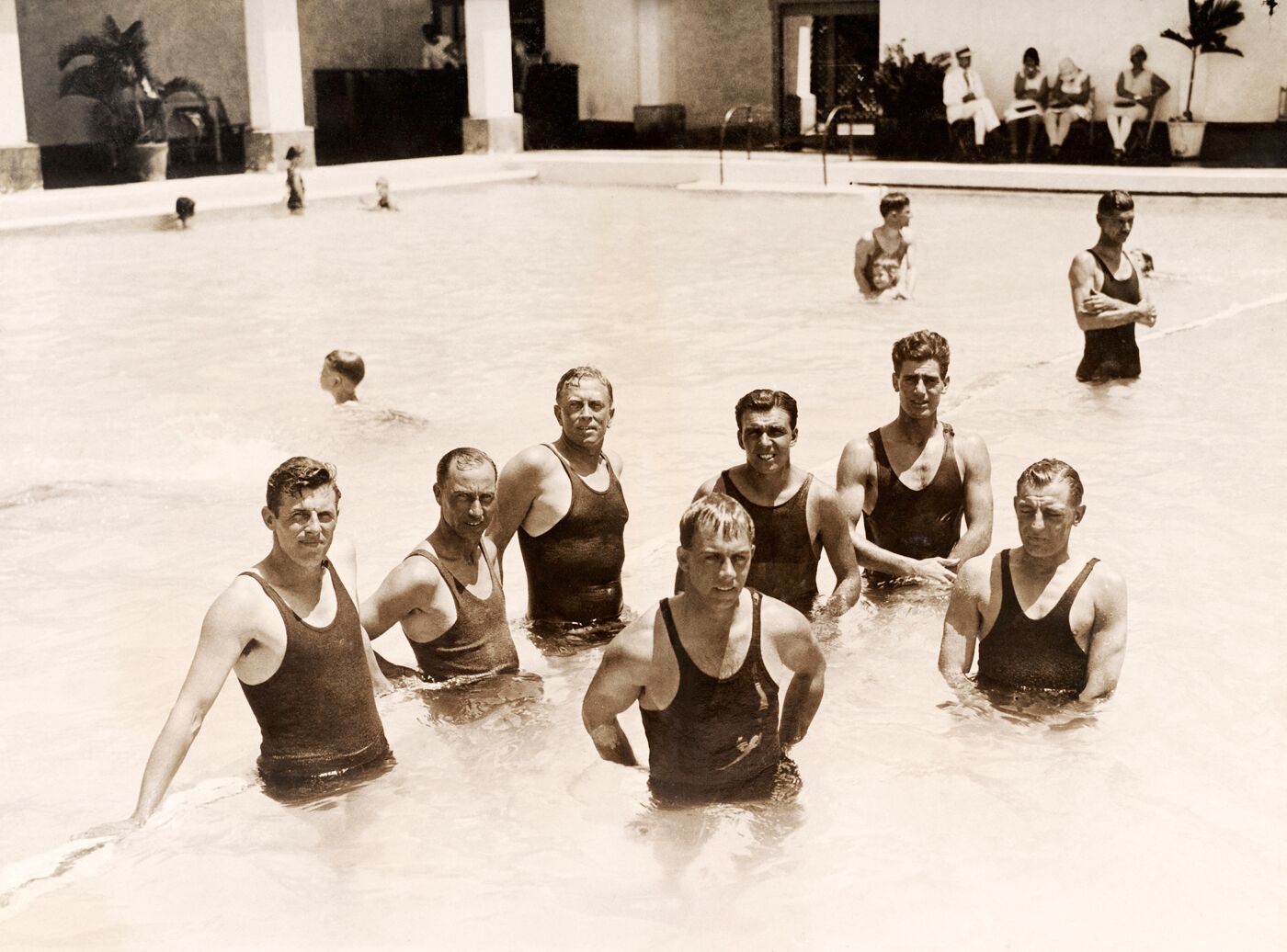Shot Stories
Seven in the shallows
England players relax in their hotel's pool before the timeless Jamaica Test in 1930, which lasted nine days before being drawn by agreement
England players relax in their hotel's pool before the timeless Jamaica Test in 1930, which lasted nine days before being drawn by agreement

Andy Sandham had not played for England since 1925. He made 325 in Jamaica, Test cricket's first triple, batting for 10 hours and hitting one seven, one five and 27 fours. As it was the tour's final game, his spare bats had been sold and the one he was using cracked, so he borrowed Freddie Calthorpe's bat. He also borrowed shoes, Patsy Hendren's, which kept slipping off his feet as he ran. For all his trouble, his record only lasted four months, till Don Bradman hit 334 in the Ashes.
Ewart Astill A veteran, Astill was 41 and had last played for England two years before. He was the second highest wicket-taker for the team, with 13, and toiled tirelessly in Jamaica - West Indies batted 276.2 overs in the game, and Astill bowled 79 of them. A middle-order batsman and medium-pacer, he cut and spun the ball both ways. Also a billiards champion and musician, he played all his nine Tests outside England.
Bob Wyatt made a dogged 58 from No. 3 in the first innings in Kingston, and opened in the second to allow Sandham a breather. Wyatt was England's captain by the end of the next series - the Ashes - and got death threats from disgruntled fans of Percy Chapman, who he replaced. When next in Jamaica, in 1935, a Manny Martindale bouncer broke Wyatt's jaw in four places. Stretchered off, he regained consciousness in the change room and pencilled in a new batting order before going to hospital.
Les Ames One of cricket's greatest wicketkeeper-batsmen and England's first choice behind the stumps for most of the '30s, Ames was on his maiden Test tour. He scored 149 off 174 in the first innings in Jamaica and ended the series as England's third highest scorer, with 417 runs at 59.57. Ames put on 249 runs with Sandham, enthusiastically pushing for quick singles and earning the rebuke: "Now look here, Les, I've been in for hours and I'm in my 40th year."
Bill Voce At 20, the left-arm pacer was the youngest member of a squad rife with players the Daily Mirror termed "grandest veterans". This was because, following West Indies and New Zealand's induction into the Test cricket family in the late 1920s, the MCC organised overlapping visits to both countries, forcing different squads to be picked. Voce topped England's bowling here, with 17 wickets. A couple of years later he would partner Harold Larwood in the Bodyline attack.
Fred Price The reserve wicketkeeper, Price was not in the original England XIV, and was brought in only after Rony Stanyforth picked up an injury. Price was the only player in the squad who did not feature in any of the four Tests. And he had to wait a long time for that place in the XI - his debut (and only) Test coming eight years later. He got more time on the field at the top level as an umpire: he stood in eight Tests between 1964 and 1967.
© Getty Images
